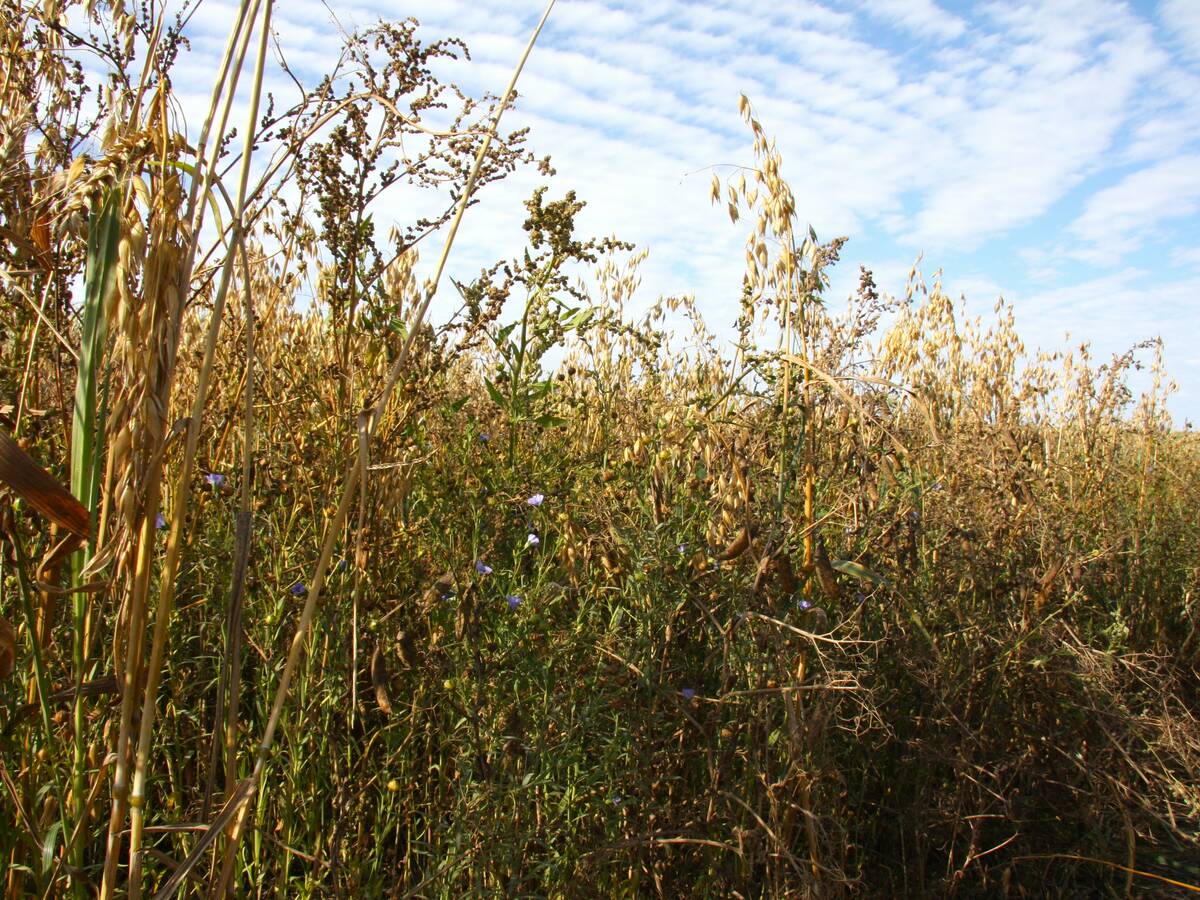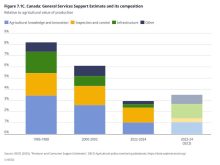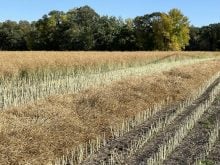Claims that Canadian farmers can’t meet the government’s emissions reduction goals without wholesale cuts to fertilizer are utterly false, says a Manitoba researcher.
“It’s pretty easy for us to meet the target,” said Mario Tenuta, senior industrial research chair in 4R nutrient management. Tenuta is based at the University of Manitoba.
“Thirty per cent is actually a very conservative amount,” he told the Co-operator. “Our research shows we could easily do way more than that in terms of reduction without reducing productivity.”
Read Also

PepsiCo nearly doubles regenerative scope
Another 240,000 farm acres managed through regenerative agriculture will be supported by PepsiCo across Manitoba and Saskatchewan by the end of 2025.
That’s not what many ag groups are saying.
“I don’t think we can reduce fertilizer emissions without reducing fertilizer, actually, at the moment because we are already so efficient,” said Gunter Jochum, president of the Western Canadian Wheat Growers Association, speaking in an Aug. 18 panel discussion hosted by the MacDonald-Laurier Institute.
“Eventually we can see reduced fertilizer use,” said Alanna Koch, chair of the Global Institute for Food Security, a partnership of fertilizer company Nutrien, the Saskatchewan government and the University of Saskatchewan. “Give us time for innovation to play its role, which we’ve already seen.”
Koch said her organization is working to improve plants’ nutrition-use efficiency.
But efficiency isn’t the point, said Tenuta.
“We’re really not talking about nitrogen efficiency here,” he said. “The target by the federal government is a reduction in nitrous oxide emissions.”
Between two and 10 per cent of nitrogen applied is lost to nitrous oxide emissions, said Tenuta. By improving efficiency, farmers could reduce emissions but that indirectly tackles the issue. Instead, they can use practices already available.
Most farmers subsurface band their nitrogen, which reduces emissions, said Tenuta, but there’s room for greater adoption. Fewer farmers are applying nitrogen in early fall but avoiding application when soil temperature is above 10 C can also reduce emissions.
Research in Manitoba shows split application of nitrogen — applying at planting and mid-season — can reduce that crop’s emissions by 48 per cent.
Agriculture and Agri-Food Canada research at Brandon has shown that not fertilizing unproductive field areas, like depressions, can also emissions. Growing legumes, which fix nitrogen, reduces emissions by 61 per cent for that field’s crop year. While many farmers are growing legumes, Tenuta said, there’s room to grow more.
Nitrification inhibitors produced a 32 per cent reduction in nitrogen oxide emissions during Manitoba research, he said, and polymer-coated urea showed a 27 per cent reduction.
However, ESN – the trade name for a controlled-release fertilizer enclosed in a polymer coating — doesn’t qualify for incentive payments under the federal government’s On-Farm Climate Action Fund (OFCAF), said the Canola Council of Canada earlier this summer.
The council said it supported ESN use, but AAFC struck it from the list based on data from Ontario and Quebec, which showed little to no reduction in emissions.
However, studies Tenuta conducted in Manitoba showed a 23 per cent reduction in emissions from use of ESN and the council is hopeful AAFC will reconsider its position and take regional differences into account.
Get serious and pay
University of Guelph researcher Manish Raizada agreed that reducing emissions without outright fertilizer cuts is possible if the government will make a serious plan and pony up serious cash.
That’s a big ‘if,’ he added, noting the Trudeau Liberals have been in power since 2015 but haven’t yet released a serious plan to target ag emissions.
“They keep on putting out these numbers and smiling at the cameras, right? Look, here we are. And then nothing’s going to happen.”
He said the government is like a team coach saying, “I know I haven’t given you the proper equipment all these years, the training. But hey, you know, next week you’re going to go to the championship. We’ve alerted the whole country about it. They’re going to be watching, and if you don’t win, you know, the country is going to go to hell.”
If the target isn’t hit, farmers will be patsies, Raizada said.
Honesty is needed from the federal government, along with acknowledgement that it’s behind, it needs a lot from farmers in a short time, and it’s willing to put cash on the table, he said.
For example, split fertilizer application reduces nitrous oxide emissions, but it also requires more fuel for a second application and may require new equipment like a high-clearance tractor. The government should subsidize or outright fund that, he said.
Other practices, like nitrification inhibitors, controlled-release fertilizers and biofertilizers, might have patchy results, Raizada said. The government should provide a financial backstop to reduce risk.
Drainage or field levelling could address the issue of nitrous oxide emissions in waterlogged soils. Cover crops and more complex rotations can also build soil organic matter and better-retain nutrients over time, but those are long-term investments, Raizada said. They won’t yield significant results by 2030.
“Some technologies will be fast, and some will be slow,” he said. “The more money they put into this, to farmers, the faster they can do this.”
When queried, western Canadian farmers say lack of proven benefit, lack of incentive and cost are the main barriers to greater adoption of 4R nitrogen management practices
What’s there?
To date, the federal government has pledged $470 million through the OFCAF to help farmers adopt practices like cover cropping, rotational grazing and fertilizer management.
The Canola Council of Canada administers OFCAF funds for nitrogen management. It will reimburse qualifying costs up to 85 per cent with a limit of $12,000 per year.
The program covers soil testing, enhanced efficiency fertilizer, preferred application methods (e.g. sub-surface banding) and field zone-mapping for precision application.
It also pledged $330 million in funding to the Agricultural Clean Technology Program, which supports purchase of energy-efficient equipment.
The webpage for this program indicates that application has been suspended due to high demand, and for those who have applied, “the program may contact you if funding is available.”
A further $100 million in sustainability research funding was also announced this spring.
Just how efficient are farmers?
A quick look at some of the many numbers being bandied about
The federal government has set a goal to reduce emissions from agriculture fertilizer use by 30 per cent by 2030, but in discussions about emissions, farmers’ fertilizer efficiency gets frequent mention.
“[Canadian farmers’ nitrogen use efficiency] is top, among the top countries in the world,” said Karen Proud, president of Fertilizer Canada, in a recent panel discussion hosted by the MacDonald-Laurier Institute. “We don’t have very far to go before we start affecting farmer yields.”
Is that true? It depends on who is asked and how ‘efficiency’ is defined. If farmers are confused, they’re not alone.
NINETY-NINE PER CENT EFFICIENT?
In the panel discussion, Gunter Jochum, president of the Western Canadian Wheat Growers, said Canadian farmers are 99.1 per cent efficient in their nitrogen fertilizer use.
The Co-operator asked Jochum about the source of this number. He cited number-crunching his organization did based on data from Canada’s National Inventory Report (NIR), which suggested that less than one per cent of nitrogen applied is lost to nitrous oxide emissions.
The 99.1 per cent, therefore, refers to how much fertilizer isn’t lost to N20 emissions, not how much is used by the crop.
Mario Tenuta, a top researcher in nitrous oxide emissions, said farmers lose anywhere from two to 10 per cent of nitrogen applied to nitrous oxide emissions.
SEVENTY-EIGHT PER CENT EFFICIENT?
Fertilizer Canada’s website says Canada’s nitrogen-use efficiency is 78 per cent.
A spokesperson for the organization said this figure comes from International Fertilizer Association (IFA) data, which is not available to the public.
A provided chart showed nitrogen use efficiency (NUE) is calculated as a ratio of input (fertilizer, fixation and manure) versus output (harvest).
The global average NUE is 46 per cent, according to a July 2021 study published in Nature Food. The study compared data sets covering 115 countries.
At the very least, this would put Canada well above average.
FIFTY-NINE PER CENT EFFICIENT?
A 2020 paper by Agriculture and Agri-Food Canada and Lethbridge College researchers put Canadian farmers’ overall nitrogen use efficiency at 59.5 per cent in 2016, and crop use efficiency at 50.9 per cent.
In that paper, NUE is defined as the ratio between nitrogen inputs and nitrogen exported in products — e.g. crops. The study doesn’t count manure as a nitrogen input.
Researchers factored in runoff losses, leaching and gaseous loss, but said figures for each are “highly uncertain.” They preferred to look at “missing or unaccounted for” nitrogen — inputs not exported in the crop that might either be lost or held in the soil.
Across crop and livestock systems, researchers couldn’t account for 40 per cent of nitrogen inputs and said they were either lost or stored in the system.
Among developed countries, 59.5 per cent efficiency puts Canada in the middle of a 50 to 70 per cent efficiency continuum, the researchers wrote. However, they said production systems and methodology varied between countries.
DOING THE BEST THEY CAN?
Fertilizer Canada and other groups cite 4R (right rate, right time, right place, right source) practices as a key way for farmers to manage fertilizer efficiently and reduce emissions.
In 2021, 63 per cent of farmers in Canada said they were familiar with 4R concepts, a Fertilizer Canada survey showed. In Ontario, 77 per cent said they were familiar.
In Western Canada, 54 per cent of canola acres and 58 per cent of spring wheat acres were grown with basic 4R principles. Nearly all surveyed growers were following the ‘right time’ principle and applying nitrogen fertilizer in fall, after soils had cooled, or in spring, the survey noted.
Only 34 per cent of western growers said they test soil nitrogen levels annually.
















